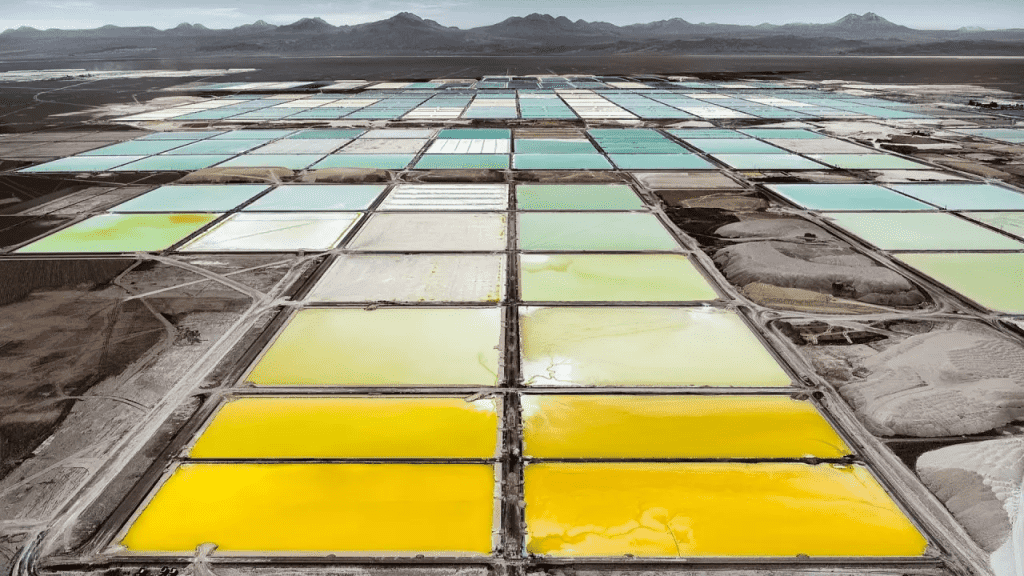An aerial photographer obtained spectacular high-definition footage of lithium production sites in South America. However, while the photographs are visually stunning, they depict the evil side of our rapidly electrified world.
German aerial photographer Tom Hegen specialises in capturing the imprints humans leave on the planet’s surface. His paintings and drawings show the places where humans mine, refine, and use resources. His most recent series shows the “Lithium Triangle.” This area rich in natural resources can be found where the borders of Chile, Argentina, and Bolivia intersect. In addition, the Salar de Atacama salt flats in northern Chile contain over a fourth of the world’s salt reserves.
“Since a lot of my work deals with the extraction, processing and use of resources, I got interested in what the transition of the mobility sector towards electromobility looked like,” Hegen spoke about the project.

“Lithium is one of the key components of building (car) batteries, and I wanted to photograph the worldwide biggest examples of lithium evaporation sites in the lithium triangle of Chile, Bolivia and Argentina.”
“To get the enormous mining operations in the frame, I chartered a small aeroplane and flew high above them,” Hegen explains.

Lithium represents an alternative to relying on fossil fuels. As the lightest known metal in the world, it is now widely employed in electric gadgets ranging from cell phones and laptop computers to automobiles and aircraft.
Moreover, lithium-ion batteries are well known for their use in electric vehicles, which are expected to account for up to 60% of new automobile sales by 2030. For example, a Tesla Model S battery consumes approximately 12 kg lithium. These batteries are essential for portable, rechargeable power. As things stand, demand for lithium is extraordinary, and many believe it is critical for the shift to renewables.

Hegen’s new photographs of the Soquimich lithium mine in the Atacama desert are part of The Lithium Series I, a new project.
Different amounts of lithium carbonate generate the various colours of the lithium fields or ponds. Their hues range from pinky white to turquoise to a very intense canary yellow.
Any sort of resource exploitation is detrimental to the environment. This is because removing these basic materials can lead to soil degradation, water shortages, biodiversity loss, ecosystem function harm, and increased global warming.
However, when we think about extraction, we immediately think of fossil fuels. Despite paving the groundwork for an electric future, lithium, unfortunately, falls under the same umbrella. Lithium is the non-renewable mineral that enables renewable energy, and it is frequently referred to as the “next oil.”

According to a Friends of the Earth (FoE) assessment, lithium extraction unavoidably affects the soil and pollutes the air. In addition, mining consequences are “increasingly harming communities where this hazardous extraction occurs, jeopardising their access to water,” according to the report.
According to similar research published in 2021 by the NGO BePe (Bienaventuradors de Pobres), water is a significant challenge for lithium mining activities.
It says that insufficient research has been conducted on the potential for water contamination and that “activity must be halted until studies are available to evaluate the degree of the damage reliably.”


